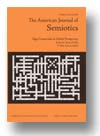
AMERICAN JOURNAL OF SEMIOTICS
Scope & Guideline
Transforming Understanding Through Semiotics
Introduction
Aims and Scopes
- Interdisciplinary Semiotic Analysis:
The journal focuses on applying semiotic methodologies to analyze various forms of communication, including language, music, visual arts, and cultural artifacts, promoting a comprehensive understanding of meaning-making. - Cognitive Semiotics:
A significant emphasis is placed on cognitive semiotics, exploring how human cognition interacts with signs and symbols, thereby bridging the gap between semiotics and cognitive science. - Cultural and Historical Contextualization:
The journal encourages the exploration of semiotics within specific cultural and historical contexts, allowing for a nuanced understanding of how meaning is constructed and interpreted across different societies. - Ethical and Philosophical Dimensions of Semiotics:
There is a consistent focus on the ethical implications of semiotic practices, including explorations of semioethics, which examine the moral responsibilities tied to signs and representations. - Innovative Theoretical Frameworks:
The journal supports the development of new theoretical frameworks within semiotics, fostering innovative approaches to signification and interpretation that challenge traditional paradigms.
Trending and Emerging
- Complex Signification in Music and Art:
There is an increasing trend towards examining complex signification in artistic domains, particularly in music, where papers explore the interplay between signs, context, and audience interpretation. - Semiotics of Practice and Performance:
Emerging research emphasizes the semiotics of practice, particularly in performance settings such as choral conducting, revealing how semiotic processes operate in real-time and interactive contexts. - Cognitive and Neurosemiotics:
The intersection of cognitive science and semiotics is gaining traction, with a focus on how cognitive processes influence sign interpretation and the implications for artificial intelligence and communication technologies. - Ethics and Responsibility in Semiotics:
A notable increase in discussions around semioethics highlights the moral dimensions of sign usage and representation, addressing contemporary social issues such as representation, identity, and cultural sensitivity. - Transdisciplinary Approaches to Semiotics:
The journal is seeing a rise in transdisciplinary studies that incorporate perspectives from various fields, such as environmental studies and social justice, reflecting a broader application of semiotic theory to address global challenges.
Declining or Waning
- Traditional Semiotic Theory:
There seems to be a decline in papers strictly adhering to classical semiotic theories, such as those rooted in Saussurean linguistics, as the field evolves towards more integrative and interdisciplinary approaches. - Static Interpretations of Signs:
The journal has seen a reduction in the exploration of static or fixed interpretations of signs, favoring instead dynamic models that consider the fluidity and contextuality of meaning. - Local or Regional Semiotic Studies:
Research focusing exclusively on local or regional semiotic practices appears to be waning, possibly overshadowed by broader, more global perspectives that address transnational semiotic phenomena.
Similar Journals
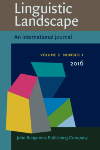
Linguistic Landscape-An International Journal
Illuminating the Role of Language in Everyday LifeLinguistic Landscape: An International Journal is a premier academic publication dedicated to the dynamic interplay between language and public space, published by John Benjamins Publishing Co. With an ISSN of 2214-9953 and an E-ISSN of 2214-9961, the journal provides an invaluable platform for researchers, professionals, and students in the fields of linguistics and sociolinguistics. Since its inception in 2019, it has swiftly established itself as a leading journal, achieving a remarkable Q1 ranking in the 2023 category for Linguistics and Language, and a strong presence in the Scopus rankings, placing it in the 85th percentile in the Arts and Humanities and 84th in Social Sciences. The journal's emphasis on open access promotes equitable dissemination of cutting-edge research and fosters collaborative exploration of linguistic landscapes across diverse contexts. With a commitment to advancing our understanding of language interactions within social environments, Linguistic Landscape is essential reading for scholars aiming to contribute to this vibrant field.
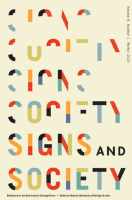
Signs and Society
Illuminating the Dynamics of Signs and SocietySigns and Society is an acclaimed academic journal published by University of Chicago Press, specializing in the interdisciplinary exploration of semiotics, cultural representations, and communication practices. With an impressive ISSN of 2326-4489 and E-ISSN 2326-4497, this journal has established itself as a credible source of research and insight within its fields. It operates under a robust framework with a convergence of topics from 2015 to 2024, and has achieved notable rankings, including Q1 placements in Cultural Studies, Linguistics and Language, and Visual Arts and Performing Arts in 2023, elevating it to a leading status among its peers. The journal’s impact is reflected in its Scopus rankings, positioning it in high percentiles across diverse categories, making it a vital resource for scholars, practitioners, and students interested in the intricate relationships between signs, society, and culture. Although not an open access publication, Signs and Society remains essential for those seeking to deepen their understanding of communication dynamics and the multifaceted dimensions of cultural expression.

INTERNATIONAL JOURNAL FOR THE SEMIOTICS OF LAW-REVUE INTERNATIONALE DE SEMIOTIQUE JURIDIQUE
Innovating Legal Studies through Semiotic PerspectivesINTERNATIONAL JOURNAL FOR THE SEMIOTICS OF LAW-REVUE INTERNATIONALE DE SEMIOTIQUE JURIDIQUE, published by Springer, stands as a vital intellectual platform within the interdisciplinary fields of law and linguistics. With an ISSN of 0952-8059 and an E-ISSN of 1572-8722, this esteemed journal has served the academic community since its inception in 1988 and continues to publish insightful research until 2024. Recognized in the 2023 rankings, it achieves Q2 status in Law and Q1 in Linguistics and Language, affirming its influence and relevance in scholarly discourse. Featuring a strong performance in Scopus rankings—comprising Rank #192 and Percentile 82nd in Language and Linguistics and Rank #254 and Percentile 75th in Law—this journal is curating high-quality contributions that explore the intersection of legal systems and semiotic theory. Despite having no open access option, it continues to disseminate important research that illuminates the semiotic dimensions of legal discourse, making it an invaluable resource for researchers, professionals, and students interested in the evolving landscape of legal and linguistic studies.

CIC-Cuadernos de Informacion y Comunicacion
Advancing Knowledge in Information and Communication StudiesCIC-Cuadernos de Informacion y Comunicacion is a leading academic journal published by the Universidad Complutense de Madrid, serving as a vital resource for scholars and practitioners in the fields of information and communication studies. Launched in 1995 as an Open Access journal, it provides an invaluable platform for disseminating innovative research and critical analysis related to communication theory, media studies, and information technology. With its focus on fostering interdisciplinary dialogue, CIC encourages submissions that explore contemporary challenges and advancements in the information landscape. Although the H-index and Scopus rankings are currently not specified, the journal’s commitment to excellence and accessibility positions it as an important contributor to academic discourse. The journal is based in Madrid, Spain, and aims to reach a global audience of researchers, professionals, and students dedicated to furthering knowledge in the rapidly evolving domains of communication and information sciences.
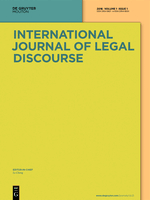
International Journal of Legal Discourse
Connecting Scholars in Law and LanguageThe International Journal of Legal Discourse, published by DE GRUYTER MOUTON in Germany, serves as a premier platform for the interdisciplinary exploration of legal and linguistic studies. With an ISSN of 2364-8821 and an E-ISSN of 2364-883X, this journal has established itself as a pivotal resource within its field since its inception in 2016, currently covering innovative research up to 2024. The journal enjoys an esteemed ranking in the Q2 category for both Law and Linguistics and Language, with impressive Scopus metrics placing it in the top 80th percentile for Linguistics and Language and the top 75th percentile for Law. Researchers, practitioners, and students alike will benefit from its rigorous peer-reviewed articles that foster dialogue and reveal new insights into the complexities of legal language and discourse. With a commitment to advancing scholarship without the barrier of open access, the journal invites contributions that enrich understanding and provoke thoughtful discussions in both the legal and linguistic communities.

TRANSACTIONS OF THE CHARLES S PEIRCE SOCIETY
Exploring the Depths of Pragmatic ThoughtTRANSACTIONS OF THE CHARLES S PEIRCE SOCIETY is a prominent scholarly journal published by Indiana University Press, specializing in the field of philosophy. With an impressive categorization as Q2 in the 2023 Philosophy quartiles, the journal is recognized for its contribution to the philosophical discourse and critical analysis of pragmatic thought. It holds a Scopus rank of #281 out of 806 in the Arts and Humanities category, placing it in the 65th percentile, which underscores its academic significance and impact within the discipline. Operating without an open access model, the journal spans from 2002 to 2024, providing a rich repository of articles that bridge classical and contemporary philosophical inquiries. The journal serves as an essential platform for researchers, professionals, and students alike, encouraging scholarly dialogue around the implications of Peirce's pragmatism and its ongoing relevance in modern philosophical contexts. For further engagement with this vital publication, readers can access it through established academic libraries or the publisher’s online platforms.
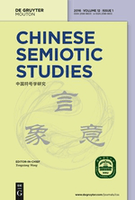
Chinese Semiotic Studies
Advancing Semiotic Insights in Chinese CultureChinese Semiotic Studies is a pivotal journal published by DE GRUYTER MOUTON, specializing in the interdisciplinary exploration of semiotics within the context of Chinese language and culture. Established in 2009, this journal serves as a crucial platform for scholars and researchers, addressing the intricate relationships between semiotic theory, communication, and linguistic practices in China. With its current rankings placing it in the Q3 category for Communication and Q2 for Linguistics and Language, Chinese Semiotic Studies is recognized for its significant contribution to the academic discourse in these fields. Although it operates under a subscription model, the journal offers robust opportunities for knowledge dissemination and research collaboration among professionals and students alike. By fostering a deeper understanding of semiotic processes, the journal plays an essential role in advancing scholarship and innovation within the realms of linguistics and communication, making it a valuable resource for anyone interested in the dynamic interplay of language, culture, and meaning.

Intersezioni
Engaging with the Pulse of Cultural DiscourseIntersezioni, published by SOC ED IL MULINO, is a prominent Italian journal in the domains of Arts and Humanities and Cultural Studies. With an ISSN of 0393-2451 and an E-ISSN of 1973-8196, this journal provides a platform for scholarly discussions and innovative research while maintaining a steadfast commitment to high academic standards since its inception. The journal's historical commitment is reflected in its converged years from 1981 to 1983, 1987 to 1989, and now 1997 to 2024. Noteworthy for its impact in the field, it holds a Q3 ranking in both Arts and Humanities (miscellaneous) and Cultural Studies for 2023. This positions the journal as a valuable outlet for researchers, professionals, and students looking to engage with contemporary issues and theories that shape cultural discourse today. While it is not an open-access journal, its contributions continue to be vital in enriching academic dialogue and fostering insights in the humanities landscape, recognized by its Scopus rankings in social sciences and general arts and humanities.
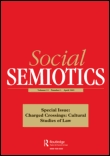
Social Semiotics
Exploring the Intersections of Language and CultureSocial Semiotics, published by Routledge Journals, Taylor & Francis Ltd, is a leading academic journal dedicated to the dynamic interplay of language, culture, and communication. Since its inception in 1991, the journal has showcased innovative research at the intersection of sociolinguistics, semiotic theory, and cultural studies, offering critical insights into how meanings are constructed and conveyed in various socio-cultural contexts. As a testament to its academic rigor, Social Semiotics holds a distinguished position in the 2023 category quartiles, achieving Q2 in Communication, Q1 in Cultural Studies, and Q1 in Linguistics and Language. Furthermore, its exceptional Scopus rankings place it in the top tiers of its fields, with notable percentiles across multiple categories, making it an essential resource for researchers, professionals, and students alike. Although currently not open access, the journal's articles are widely considered pivotal for understanding contemporary issues in communication and cultural theory. For those engaged in the study of semiotics, Social Semiotics remains an indispensable platform for scholarly dialogue and advancement.
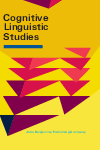
Cognitive Linguistic Studies
Advancing Insights in Cognitive LinguisticsCognitive Linguistic Studies is a prestigious journal published by JOHN BENJAMINS PUBLISHING CO, dedicated to advancing the interdisciplinary field of cognitive linguistics. With an ISSN of 2213-8722 and an E-ISSN of 2213-8730, the journal serves as an essential platform for the dissemination of high-quality research that delves into the intricate relationships between language, thought, and cultural contexts. Located in the vibrant academic milieu of the Netherlands, this journal has gained recognition for its impactful contributions, reflected in its respectable Q2 category ranking within the field of Linguistics and Language as of 2023. Redesigned to accommodate a broader audience, the journal welcomes original research articles, reviews, and theoretical discussions that bridge cognitive science and linguistic inquiry. As the journal continues its trajectory of growth, being indexed with a solid Scopus rank of #459 out of 1167 in the social sciences, it remains a vital resource for researchers, professionals, and students eager to explore the dynamic interplay between cognition and language.